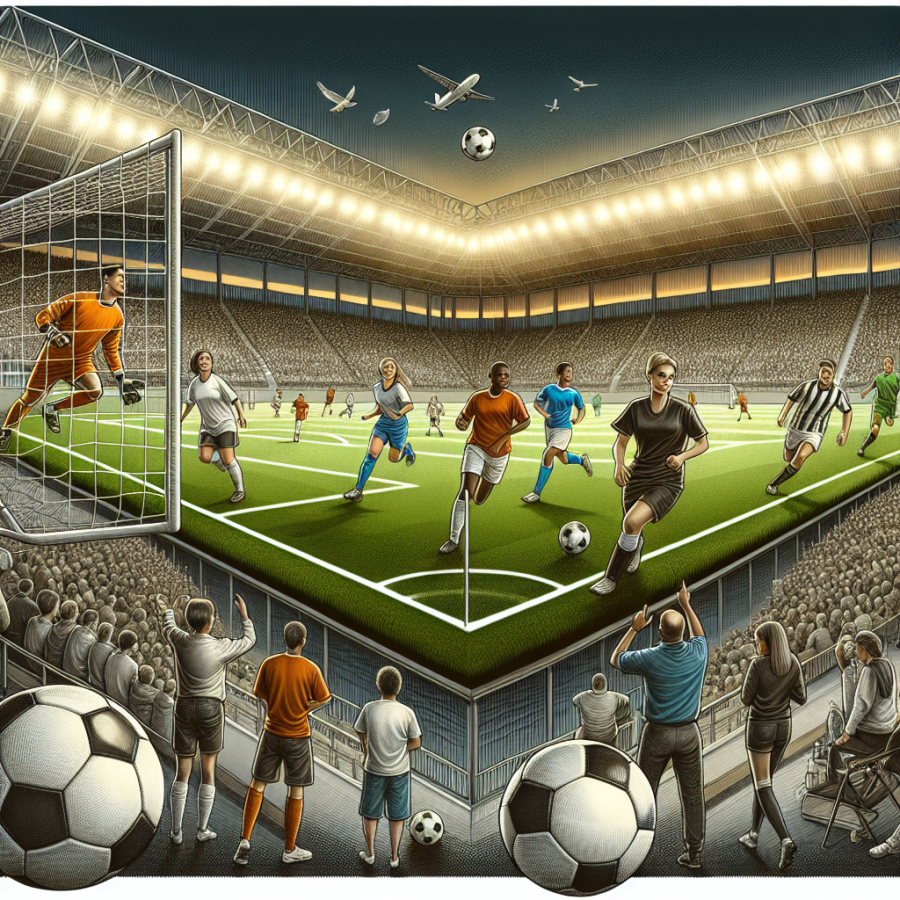Beyond the Pitch: Tactics, Strategies, and Player Roles in Soccer
Soccer, often referred to as football outside of North America, is a game of intense strategy, intricate positioning, and a blend of individual skill and team coordination. Understanding the tactics, the strategies, and the distribution of player roles is an essential part of appreciating the game at a deeper level.
Beginning with player roles, it's critical to realize that each player has a distinct function on the pitch. Although there are 11 players on a team, their roles are not identical, and in soccer, these roles are typically broken down into four main categories—goalkeepers, defenders, midfielders, and forwards.
The goalkeeper's primary role is to prevent the opposing team from scoring by stopping the ball from entering the net. They are the last line of defense and are allowed to use any part of their body to stop the ball— a privilege not given to other players on the field.
Defenders are stationed in front of the goalkeeper, and their objective is to block the opposing team's advancement towards their goal. Their role can be further divided into central defenders, wingbacks, and full-backs, each with unique responsibilities within the defensive line.
Midfielders are the utility players of soccer. Positioned centrally on the pitch, these players are involved in both defensive and offensive play. Some midfielders specialize in defense, some in controlling the tempo of the game, and others in making critical forward passes to set up goal opportunities.
Forwards, or strikers, are the primary goal scorers. They play closest to the opponent's goal, relying on quick reflexes, exceptional ball control, and a sharp eye for scoring opportunities. They are often the stars of the team, but they rely heavily on the support of the other players.
When it comes to tactics and strategies, the intent is to maximize the strength and talents of the team members while exploiting the weaknesses of the opponent. Tactics might involve specific player movements, styles of play, and the manner in which the team responds to in-game situations. For instance, a team may use a possession-based tactic, holding onto the ball for extended periods to limit the opponent's scoring opportunity, or they may use a direct, attacking style, going for goals aggressively right from the start.
Strategies might extend over multiple games and could involve player rotation, mental conditioning, and adapting to different environments and opponents. Soccer strategies can be as varied and complex as a chess game, where the coach has to think multiple steps ahead and make strategic decisions.
Read also:
Harnessing the Wind: The Thrill of Kite Landboarding
Grasping the Basics: Rules and Structures in Soccer
Soccer, otherwise known as football in most parts of the world, is an exciting team sport with unique rules and structures that vary significantly from other popular sports. Grasping the rudimentary elements is crucial to both enjoy the athletic spectacle and participate in it. These basics are broadly categorized into the game's structure, rules, and player roles.
Beginning with the game's structure, a soccer match is divided into two halves of 45 minutes each, with a 15-minute break known as half-time sandwiched in between. The time and halves concept is very straightforward, but the added element of 'injury time' or 'stoppage time' shows the complexity involved in soccer's timekeeping. Unlike other sports, where the clock stops whenever play halts, soccer's clock keeps running, with the lost time accrued and added at the end of each half.
The structure also extends to the playing field, known as the pitch. It's a rectangular grass field, with its size varying within regulated limits. Each end of the pitch features a goal, with its front side equipped with a six-yard box and an eighteen-yard box. Players aim to score goals by getting the ball into these goals.
In terms of player roles, a team comprises of eleven players; one goalkeeper and ten outfield players. The outfield players are further divided into defenders, midfielders, and attackers, each with unique responsibilities and positions on the pitch. The goalkeeper, distinctively dressed in a different color, is the only player allowed to use their hands but only within their eighteen-yard box.
For the rules, soccer is famous for its offside rule. Simply put, a player is deemed offside if they are closer to the opponent's goal line than both the ball and the second-last opponent at the time the ball is played to them, with some exceptions. While its concept is simple, its implementation often leads to contentious debates among fans and pundits alike.
Furthermore, fouls and misconducts are part of soccer's rules. These infractions, identified by the referee, range from harmless mistakes like minor pushes to dangerous actions like violent tackles. Depending on the severity, these fouls result in free-kicks, penalty kicks, or disciplinary actions like yellow or red cards.
Other crucial rules include the throw-in rule, applied when the ball goes out of play across the sidelines. The team that didn't touch the ball last is given a throw-in to restart play.




